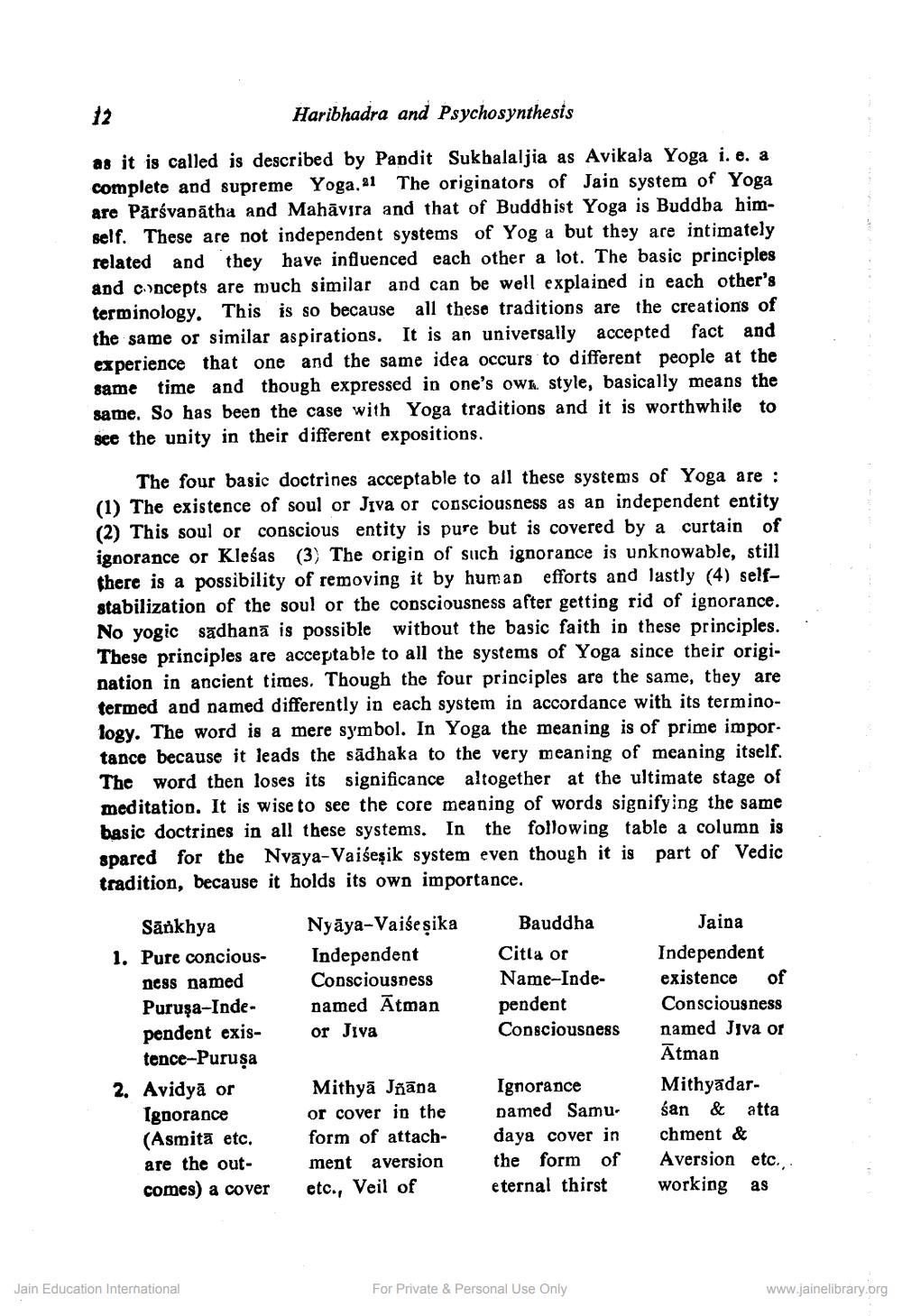________________
Haribhadra and Psychosynthesis
as it is called is described by Pandit Sukhalaljia as Avikala Yoga i. e. a complete and supreme Yoga. 21 The originators of Jain system of Yoga are Pārsvanatha and Mahavira and that of Buddhist Yoga is Buddha himself. These are not independent systems of Yog a but they are intimately related and they have influenced each other a lot. The basic principles and concepts are much similar and can be well explained in each other's terminology. This is so because all these traditions are the creations of the same or similar aspirations. It is an universally accepted fact and experience that one and the same idea occurs to different people at the same time and though expressed in one's own style, basically means the same. So has been the case with Yoga traditions and it is worthwhile to see the unity in their different expositions.
The four basic doctrines acceptable to all these systems of Yoga are: (1) The existence of soul or Jiva or consciousness as an independent entity (2) This soul or conscious entity is pure but is covered by a curtain of ignorance or Kleśas (3) The origin of such ignorance is unknowable, still there is a possibility of removing it by human efforts and lastly (4) selfstabilization of the soul or the consciousness after getting rid of ignorance. No yogic sadhana is possible without the basic faith in these principles. These principles are acceptable to all the systems of Yoga since their origination in ancient times. Though the four principles are the same, they are termed and named differently in each system in accordance with its terminology. The word is a mere symbol. In Yoga the meaning is of prime importance because it leads the sädhaka to the very meaning of meaning itself. The word then loses its significance altogether at the ultimate stage of meditation. It is wise to see the core meaning of words signifying the same basic doctrines in all these systems. In the following table a column is spared for the Nvaya-Vaiśeşik system even though it is part of Vedic tradition, because it holds its own importance.
Sankhya
1. Pure conciousness named Puruşa-Independent existence-Puruşa
2. Avidya or Ignorance (Asmita etc. are the outcomes) a cover
Jain Education International
Nyaya-Vaise şika
Independent
Consciousness named Atman or Jiva
Mithya Jñana or cover in the form of attachment aversion etc., Veil of
Bauddha
Citta or Name-Inde
pendent Consciousness
Ignorance named Samudaya cover in the form of eternal thirst
For Private & Personal Use Only
Jaina Independent existence of
Consciousness named Jiva or Atman
Mithyadarśan & atta chment & Aversion etc... working
as
www.jainelibrary.org




